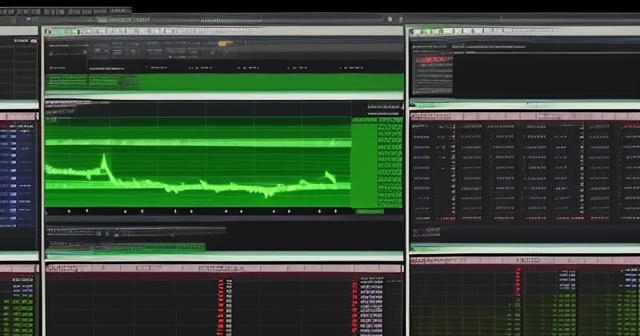Unlocking Futures Insights: A Trader’s Guide to the Commitment of Traders (COT) Report
Trading futures markets can feel like navigating a vast ocean. Prices ebb and flow, driven by complex forces, and knowing who is doing what beneath the surface is incredibly valuable. While price charts show us the ‘what’ (what price did), they often don’t reveal the ‘who’ (who is buying, who is selling, and importantly, *why*). This is where the Commitment of Traders (COT) Report comes in. Published weekly by the U.S. Commodity Futures Trading Commission (CFTC), the COT report provides a unique window into the aggregate positioning of key participants in U.S. futures markets. It’s a powerful transparency tool that can help you understand market sentiment, identify potential shifts in supply and demand dynamics, and potentially spot trading opportunities that are less obvious from price action alone.
Think of it like getting a behind-the-scenes look at a major financial conference. You see the public statements (price), but the COT report lets you see where the big players are actually sitting and how much they’re betting (positioning). For anyone serious about trading futures, commodities, currencies, or even understanding broader market sentiment reflected in bond or equity index futures, mastering the COT report is not just helpful, it’s often essential. We’re going to break down this powerful report, exploring who the players are, how to read their positions, and how to integrate this knowledge into your trading strategy.

Understanding the COT report involves recognizing its impact on trading strategies. Here are key aspects to consider:
- Market Sentiment: Provides insights into the directional conviction of large traders.
- Hedging Behaviors: Helps to identify how producers and users manage their positions against price fluctuations.
- Potential Turning Points: Indicates when the market might reverse due to extreme trader positioning.
Why the COT Report Matters for Your Trading Strategy
Why should you, as a trader, care about a weekly report detailing futures positions? Because futures markets are where many of the fundamental supply and demand forces for commodities, currencies, and financial instruments are expressed. The traders participating in these markets include major producers, consumers, large financial institutions, and sophisticated speculators. Their positioning isn’t random; it reflects their operational needs, hedging strategies, and market views.
The COT report enhances market transparency by showing the holdings of different trader categories. This prevents large players from accumulating significant, undisclosed positions without public awareness. For you, this transparency is a gift. By analyzing the report, you can gain insights into:
- Market Sentiment: Are large speculators heavily long or short? This can indicate strong directional conviction.
- Supply and Demand Dynamics: Commercials (producers and users) position themselves based on physical supply and demand needs. Their activity can signal underlying market health or stress.
- Potential Turning Points: Extreme positioning by certain groups can signal that a market is ‘crowded’ and potentially due for a reversal.
- Trend Confirmation or Challenge: Are the big players adding to positions in the direction of the current price trend, or are they quietly building opposing positions?
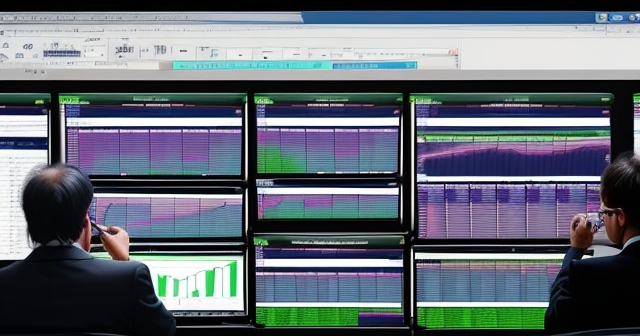
Understanding the ‘why’ behind price movements requires understanding the participants. The COT report gives you the data on who is participating and how significantly. It’s a piece of the puzzle that goes beyond technical analysis and fundamental analysis, offering insights into the very structure of market participation.
Decoding the Players: Understanding the Different Trader Categories
The heart of the COT report lies in its breakdown of open interest – the total number of outstanding futures or options contracts – into categories of traders. The report typically categorizes participants based on their primary business activity and the size of their positions. The specific categories vary slightly depending on the report type (Legacy, Disaggregated, or Trader in Financial Futures – TFF), but the core distinction is between those using futures for hedging and those using them for speculation.
The primary categories you’ll encounter are:
- Producer/Merchant/Processor/User (Commercials): These are businesses directly involved in the commodity or asset being traded. Think farmers hedging crops, oil companies managing price risk, or multinational corporations managing currency exposure. Their primary goal is *not* speculation but hedging physical risk. They often take positions opposite to the prevailing trend or what appears profitable speculatively, using futures to lock in prices for future production or consumption. They are typically considered the most informed participants regarding fundamental supply and demand.
- Swap Dealers: These entities act as intermediaries in swaps or other over-the-counter (OTC) markets and use futures markets to hedge their OTC risks. Their positioning is driven by the positions they take with their OTC clients (e.g., corporations hedging risk).
- Managed Money: This group consists of registered commodity trading advisors (CTAs), commodity pool operators (CPOs), hedge funds, and similar professional money managers who trade futures on behalf of clients. They are typically large, sophisticated speculators. Managed Money often trades with the trend, employing quantitative or discretionary strategies aimed at profiting from price movements. Their positioning can significantly influence market momentum.
- Other Reportables: These are large traders who don’t fit neatly into the other categories, such as large institutions, individual traders with very large positions, or endowments. Their motivations can be varied.
- Nonreportables (Small Traders): This category represents the positions of all traders below the reportable threshold (the minimum position size required to be included in the reportable categories). This group includes smaller individual traders and retail participants. Their aggregate positions are often assumed to be less influential on major market trends compared to the Reportable categories.
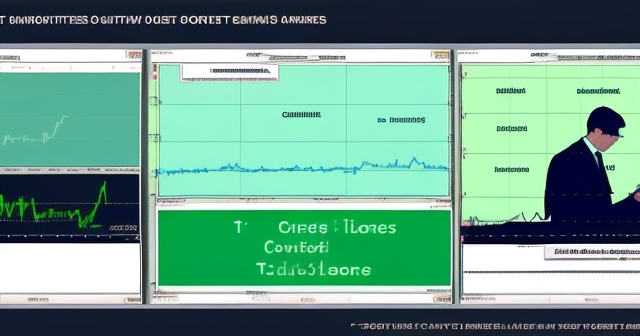
Understanding the typical behavior and motivations of these groups – especially the contrasting roles of Commercials and Managed Money – is crucial for interpreting the data. Are the ‘smart money’ Commercials increasing their shorts at a high price (indicating expected future supply)? Are the trend-following Managed Money players piling into longs (confirming a strong bullish trend)? These questions are central to COT analysis.
Understanding Commercial Traders: The ‘Smart Money’?
Often referred to as the “smart money” by COT analysts, the Commercials category (Producer/Merchant/Processor/User) is perhaps the most intriguing. Unlike speculators who are primarily trying to profit from price changes, Commercials are using futures markets for hedging. They are businesses with direct exposure to the underlying physical commodity or financial asset. A farmer might sell futures contracts to lock in a price for their harvest; an airline might buy fuel futures to hedge against rising costs; a company might use currency futures to manage foreign exchange risk on international transactions.
Because their trading is fundamentally driven by their operational needs rather than market direction forecasts, Commercials often appear to be taking positions that seem counter-intuitive or ‘wrong’ from a simple directional perspective. When prices are high, Commercials (like producers) tend to be heavy net sellers (locking in favorable selling prices for future production). When prices are low, Commercials (like users) tend to be heavy net buyers (locking in favorable purchase prices for future needs). This natural hedging behavior means their net position is frequently contrarian to the prevailing price trend.

Why are they considered ‘smart’? Because their positions reflect the actual supply and demand conditions of the underlying asset, which they understand intimately through their business operations. While their positions might appear unprofitable in the short term, they are successful hedges from a business perspective. Analyzing extreme net positioning in the Commercial category can be particularly powerful. Historically, when Commercials build up exceptionally large net long positions, it often corresponds to price lows (they are buying heavily at cheap levels). Conversely, large net short positions often coincide with price highs (they are selling heavily at expensive levels). They are not trying to pick exact tops or bottoms, but their concentrated hedging activity can highlight zones where fundamental value is perceived to be out of line with current prices by the most knowledgeable participants.
Interpreting Commercial positioning requires understanding their hedging function. A large net short by Commercials in Crude Oil, for instance, isn’t necessarily bearish speculation; it’s likely producers locking in high prices. But if that net short reaches a historical extreme, it suggests that producers feel current prices are very attractive for locking in, which *could* signal that the rally is approaching its peak. Conversely, extreme net long positions suggest users feel current prices are very attractive for buying forward, potentially signaling a bottom is near.
Managed Money: The Trend Followers and Speculators
In contrast to the Commercials, the Managed Money category consists of professional money managers whose primary goal *is* to profit from price movements. This group includes well-known entities like hedge funds and Commodity Trading Advisors (CTAs). They employ diverse trading strategies, but collectively, they are often characterized as trend followers or large speculators who add liquidity to the market.
When a market begins to trend – either up or down – Managed Money tends to increase their positions in the direction of that trend. If a commodity price is rising, Managed Money will likely be significant net buyers, adding long positions to ride the upward momentum. If a currency is falling, they will likely be significant net sellers, adding short positions. This behavior means their net position is often directional and aligns with the current price movement.
Analyzing Managed Money positioning helps you understand the strength and conviction of the speculative money flowing into a market. Are speculators aggressively buying into a rally, suggesting strong belief in its continuation? Or are they reducing positions despite a rising price, potentially signaling waning momentum?
| Managed Money Positioning | Market Implication |
|---|---|
| Large Net Long Position | Speculative conviction that prices will rise. |
| Large Net Short Position | Speculative conviction that prices will fall. |
Like Commercials, identifying positioning extremes in the Managed Money category can be insightful, though interpreted differently. When Managed Money accumulates historically large net long positions, it suggests a market is a crowded trade – a large number of speculators are already positioned on one side. While this can fuel further price movement in the short term, it also increases the risk of a sharp reversal if something causes these positions to unwind rapidly (a phenomenon known as a ‘long squeeze’ or ‘short squeeze’). Conversely, historically large net short positions indicate a crowded bearish trade, vulnerable to a swift move higher if conditions change.
Comparing the positions of Managed Money and Commercials is often the core of sophisticated COT analysis. When both groups are heavily positioned on opposite sides, and one group’s position reaches an extreme relative to its historical range, it can provide a compelling signal about potential market direction or risk levels.
Accessing and Reading the Raw COT Data
The COT Report is published every Friday at 3:30 PM Eastern Time by the CFTC. It reflects positions held as of the close of business on the preceding Tuesday. This three-day lag is important to remember – you are analyzing data that is a few days old when it is released.
You can access the raw data directly from the CFTC website. They provide several report formats:
- Legacy Reports: The original, long-running format, available for futures-only and combined futures and options. The primary categories are Commercial, Non-Commercial (essentially Large Speculators, including Managed Money and some Other Reportables), and Nonreportable (Small Traders).
- Disaggregated Reports: Introduced to provide more detail in specific commodity markets (agriculture, energy, metals, and basis metals). This report breaks down Non-Commercials and Commercials further into categories like Producer/Merchant/Processor/User, Swap Dealers, Managed Money, and Other Reportables. This version often provides a clearer picture of specific participant types like Managed Money.
- Traders in Financial Futures (TFF) Reports: Similar disaggregation but specifically for financial futures markets like currencies, bonds, and stock indices. Categories include Dealer/Intermediary, Asset Manager/Institutional, Leveraged Funds (often overlaps significantly with Managed Money), and Other Reportables.
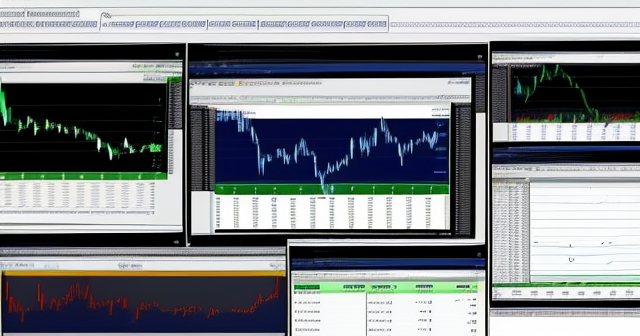
While the raw data tables on the CFTC site are the ultimate source of truth, they can be dense and challenging to interpret directly. Many traders and analysts rely on financial data providers (like Barchart.com or Insider-Week.com, as mentioned in the source data) or trading platforms that process and visualize the COT data. These resources often provide charts and indices that make it much easier to see trends in net positions, changes, and extremes.
When you look at the data, focus on:
- Net Position: The difference between total long positions and total short positions for a given trader category (Longs – Shorts = Net Position). A positive number is a net long position, a negative number is a net short position. This is the most commonly analyzed metric.
- Change in Net Position: The difference in the net position from the previous week’s report. This tells you which categories added or reduced their exposure and in which direction.
- Open Interest: The total number of contracts outstanding. Changes in open interest alongside positioning changes can offer clues about whether new money is entering the market or if positions are simply being shifted between participants.
| COT Data Analysis Focus | Description |
|---|---|
| Net Position | Difference between longs and shorts. |
| Change in Net Position | Week-over-week changes in positioning. |
| Open Interest | Total number of outstanding contracts. |
Mastering the different report formats and understanding the categories within each is the first step to unlocking the COT report’s power. Remember the reporting thresholds: a market is only included if there are at least 20 reportable traders, and trader counts are suppressed if there are fewer than 4 in a category to maintain confidentiality.
Interpreting Net Positions and Week-over-Week Changes
The most fundamental way to use the COT report is by analyzing the Net Positions of the key trader categories, particularly Commercials and Managed Money. The net position tells you, on aggregate, whether a group is leaning bullish (net long) or bearish (net short).
For Managed Money (Large Speculators):
- Large Net Long Position: Indicates strong speculative conviction that prices will rise. It often confirms an existing uptrend.
- Large Net Short Position: Indicates strong speculative conviction that prices will fall. It often confirms an existing downtrend.
- Increasing Net Longs: Suggests growing bullish momentum among speculators.
- Increasing Net Shorts: Suggests growing bearish momentum among speculators.
- Decreasing Net Longs (or increasing Net Shorts): Can signal waning bullish conviction or the potential for a trend reversal or pause.
- Decreasing Net Shorts (or increasing Net Longs): Can signal waning bearish conviction or the potential for a trend reversal or pause.
For Commercials (Hedgers):
- Large Net Short Position: Indicates producers/sellers are locking in favorable high prices for future production. This often occurs near price highs.
- Large Net Long Position: Indicates users/buyers are locking in favorable low prices for future needs. This often occurs near price lows.
- Increasing Net Shorts: Suggests Commercials are increasingly hedging against falling prices (selling forward), often happening as prices rise.
- Increasing Net Longs: Suggests Commercials are increasingly hedging against rising prices (buying forward), often happening as prices fall.
The Week-over-Week Changes in these net positions are also incredibly telling. A sudden large increase in Managed Money net longs could signal a breakout trade gaining speculative traction. A significant reduction in Commercial net shorts, even if they remain net short, could suggest that underlying fundamental pressure to sell is easing, potentially supporting prices. Pay attention when different groups make significant shifts in opposite directions – this can highlight underlying tension in the market.
Combining Net Position levels with the weekly changes provides a dynamic view. Are Managed Money adding to an already large net long position, suggesting the trade is getting increasingly crowded? Or are they adding significant new longs from a relatively neutral position, suggesting fresh bullish conviction?
Identifying COT Extremes: A Powerful Signal for Potential Reversals
One of the most powerful applications of COT data is identifying positioning extremes. This involves looking at the current net position of a trader category, particularly Commercials or Managed Money, relative to its historical range over a specific period (e.g., the last 1, 3, or 5 years, or even longer). When a category’s net long or net short position reaches an level rarely seen before, it can be a significant signal.
For Commercials, extreme net long positions (historically high net long or historically low net short) often coincide with major price bottoms. Why? Because this indicates that the businesses that understand the underlying asset best are the most aggressive buyers/hedgers they have been in a long time, suggesting current prices are exceptionally low relative to their perceived value or cost of production. Conversely, extreme net short positions (historically high net short or historically low net long) often occur near major price tops, as producers rush to lock in what they perceive as unusually high prices.
For Managed Money, extreme net long positions (historically high net long) signal a very crowded bullish trade. A large number of speculators are betting on higher prices. While this can indicate strong current momentum, it also means there is a large pool of potential sellers if sentiment shifts even slightly, making the market vulnerable to a sharp correction or reversal driven by position unwinding. Similarly, extreme net short positions (historically high net short) indicate a very crowded bearish trade, susceptible to a short squeeze.
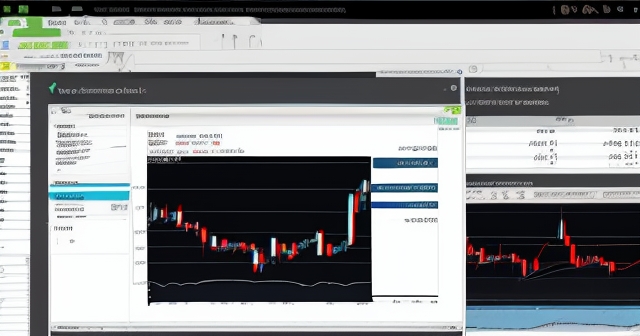
Many analysts use a “COT Index” or look at X-week percentiles (e.g., 26-week position extremes, as mentioned in the source data) to quantify these extremes. A Commercial Net Position at a 5-year net long extreme is a much stronger signal than a 6-month extreme, for instance. It’s about finding those rare instances where positioning is truly stretched.
It’s crucial to remember that extremes are not precise timing signals. A market can remain in an extreme positioning state for weeks or even months, and prices can continue to move against the ‘extreme’ signal before a reversal occurs. COT extremes are best viewed as warnings that a significant turning point *may* be approaching or that the risk/reward of continuing to follow the current trend is deteriorating due to overcrowded conditions.
Using COT Divergences for Trading Signals
Beyond looking at net positions and extremes in isolation, one of the most valuable analytical techniques involves identifying divergences between COT data and price action. A divergence occurs when prices are moving in one direction, but the positioning of a key trader category is moving in the opposite direction or failing to confirm the price move.
A classic example is a bearish divergence using Commercials:
- Price is making new highs, suggesting an uptrend is strong.
- However, Commercials are *increasing* their net short positions or *decreasing* their net long positions, possibly reaching a historical extreme net short.
In this scenario, price is saying “up,” but the Hedgers (who best understand the fundamental supply/demand) are quietly betting against further gains by locking in sales at these high levels. This divergence suggests that the price rally might be fueled more by speculative momentum than underlying fundamental support and could be vulnerable to a top forming.
Conversely, a bullish divergence with Commercials might look like:
- Price is making new lows, suggesting a downtrend is strong.
- However, Commercials are *increasing* their net long positions or *decreasing* their net short positions, potentially reaching a historical extreme net long.
Here, price says “down,” but the fundamental players are accumulating long positions at these low levels, implying they see value or anticipate future demand that isn’t yet reflected in the price. This could signal that the downtrend is nearing exhaustion and a bottom may be forming.
You can also look for divergences with Managed Money. For instance, if price is making new highs but Managed Money net long positioning is *decreasing* or failing to make corresponding new highs, it suggests that speculative conviction is weakening even as price rises – a potential sign of a weakening trend or distribution.
Divergences provide a powerful tool for identifying potential trend exhaustion or reversals before they become obvious on a price chart. They are not guaranteed signals but serve as strong probabilistic indicators that should prompt further investigation using other analytical methods.
COT Analysis in Specific Markets: Examples and Nuances
The COT report covers a wide range of futures markets, and the interpretation of the data can have nuances depending on the specific asset class. Let’s touch upon a few examples:
- Commodities (Crude Oil, Gold, Soybeans): These are often prime examples for COT analysis due to the clear distinction between Commercials (producers/users) and Speculators (Managed Money). Extreme Commercial positioning is often a strong signal of potential fundamental shifts. For instance, the source data mentions broad risk reduction in commodities ahead of easing trade tensions, which would likely show up as reduced net long or increased net short positions across Managed Money in various commodity futures. The Soybean example, highlighting the divergence between Soybean oil and meal positioning due to a policy mandate, perfectly illustrates how fundamental events translate into specific COT signals for co-products.
- Currencies (Dollar Index, major pairs): Currency futures reflect global macroeconomic forces and interest rate expectations. Managed Money positioning often follows carry trades or large directional macro bets. Commercial positions in currencies represent corporations hedging foreign exchange risk. Extreme Managed Money positioning in a currency pair can signal a crowded trade susceptible to unwinding based on shifts in monetary policy expectations or global risk sentiment. The Dollar Index COT can provide insights into broad USD sentiment.
- Bonds (T-Bonds, T-Notes): Bond futures are highly sensitive to interest rate expectations and monetary policy. Managed Money positioning often reflects bets on the direction of interest rates or yield curve shape. Commercials include large financial institutions managing interest rate risk on their balance sheets or hedging large bond portfolios. Analysis here involves looking at how speculators are positioning relative to expectations of Fed policy or inflation. Extreme Managed Money net shorts in Treasuries often coincide with periods of high fear of rising rates, potentially signaling a low point for bond prices (high for yields).
- Stock Indices (S&P500, NASDAQ): Index futures are used by institutions to hedge large equity portfolios (Commercials/Asset Managers) and by speculators to bet on overall market direction (Managed Money/Leveraged Funds). Extreme speculative (Managed Money/Leveraged Funds) net long positions can indicate excessive optimism and potential vulnerability to corrections. Conversely, large net shorts can signal bearish sentiment potentially reaching an extreme. Analyzing these positions provides insight into how different institutional money is positioning relative to the overall equity market trend.
| Market Example | COT Analysis Nuance |
|---|---|
| Commodities | Clear distinction between Commercials and Speculators. |
| Currencies | Managed Money often follows macro bets. |
| Bonds | Sensitive to interest rate expectations. |
| Stock Indices | Speculative positions can indicate market optimism/pessimism. |
While the core principles of analyzing Net Positions, Changes, and Extremes apply across markets, understanding the specific drivers of supply, demand, and hedging for each asset is crucial for accurate interpretation. A large Commercial net short in Gold means something different fundamentally than a large Commercial net short in Crude Oil.
If you are looking to expand your trading horizons into different asset classes, including exploring opportunities in forex and other CFD products, understanding the dynamics revealed by reports like the COT can be invaluable. Finding a platform that provides access to a wide range of markets and robust analytical tools is essential.
Integrating COT Data with Other Analytical Methods
The Commitment of Traders report is a powerful tool, but it is rarely recommended as a standalone trading signal. Its strength is maximized when integrated with other forms of market analysis – technical analysis and fundamental analysis.
Combining COT with Technical Analysis:
- Confirming Trends: Is price in a strong uptrend, and are Managed Money net longs increasing week after week? This provides confirmation from speculative positioning.
- Identifying Potential Reversals: Is price approaching a major support or resistance level on the chart, *and* is a key COT category showing extreme positioning or a divergence? This confluence of signals increases the probability of a turning point. For example, if Gold price is hitting a long-term resistance level and Commercials are at a historical net short extreme while Managed Money net longs are also stretched, it strengthens the case for a potential reversal.
- Validating Breakouts: If a market breaks out of a consolidation pattern, look at the COT report. Are Managed Money significantly increasing their positions in the direction of the breakout? This suggests genuine speculative conviction behind the move, increasing the likelihood of follow-through.
- Understanding Market Structure: Is open interest increasing or decreasing alongside price and positioning? Increasing open interest with rising prices and increasing Managed Money net longs confirms new money entering the market on the long side, indicative of a healthy trend.
Combining COT with Fundamental Analysis:
- Connecting Macro Events to Positioning: Understand how major economic news (like inflation data, interest rate decisions), geopolitical events (like trade agreements, conflicts), or supply/demand news (like crop reports, inventory data) might influence the positioning of different trader groups. For instance, the source data mentioned how easing US-China trade tensions led to broad risk reduction in commodities. You would expect to see Managed Money reducing net long exposure (or increasing net shorts) across relevant commodity markets in the COT reports following such news.
- Validating Fundamental Bias: Do your fundamental views on a market (e.g., you believe supply is tightening in oil) align with what Commercials (the hedgers) are doing? If you think supply is tightening and Commercials are aggressively increasing net long positions (buying future supply), this provides strong fundamental confirmation from market participants who are directly affected by supply issues.
- Identifying Policy Impacts: As shown in the Soybean example, policy changes can have direct, quantifiable impacts on trader positioning that the COT report reveals. Understanding the policy allows you to interpret the COT data correctly.
By integrating COT data, you add a layer of depth to your analysis, moving beyond just price or economic data to understand the underlying positioning and sentiment of major market participants. It helps you see if the ‘big money’ agrees with your assessment or is positioned contrary to it, which can be a valuable check on your trading ideas.
For traders utilizing various platforms and aiming for global markets, including forex and other CFDs, the choice of broker significantly impacts access to tools and data feeds that might help integrate COT analysis. If you’re evaluating trading platforms,
If you are evaluating trading platforms, Moneta Markets is an Australian-based platform offering a wide range of over 1000 financial instruments, suitable for both novice and experienced traders. They offer flexibility with popular platforms like MT4, MT5, and Pro Trader, known for fast execution and low spreads, which contributes to a positive trading experience.
Conclusion: Mastering COT for Strategic Trading Success
The Commitment of Traders (COT) Report is a unique and powerful tool available to futures market participants. It lifts the veil on the positioning of key trader categories, providing insights into market sentiment, the behavior of commercial hedgers versus speculative money, and potential areas of market vulnerability due to crowded trades or fundamental imbalances. While seemingly complex at first glance, learning to decode the language of the COT report – understanding Net Positions, Week-over-Week Changes, and especially Positioning Extremes and Divergences – can significantly enhance your market analysis capabilities.
We’ve seen how Commercials, driven by hedging needs, often act as contrarians, while Managed Money, driven by speculation, often follows trends. Analyzing their collective actions can provide signals about trend strength, potential momentum shifts, or the likelihood of a market reversal at extreme points. Divergences between price action and COT positioning offer another layer of predictive power, hinting when price moves might lack underlying support from key participants.
Remember that the COT report is backward-looking data, reflecting positions from the previous Tuesday. Market conditions can change rapidly between Tuesday’s close and Friday’s report release. Therefore, the report is best used as a tool for understanding the *structure* of the market and the *likelihood* of certain outcomes based on positioning, rather than a precise timing indicator.
Ultimately, the most effective way to leverage the COT report is to integrate its insights with your existing technical and fundamental analysis. Does the COT data confirm the trend you see on the chart? Does it support your fundamental view on supply and demand? Is the positioning of key players signaling caution near a technical level or a major economic event? By combining these analytical approaches, you can build a more robust understanding of market dynamics and make more informed trading decisions. Mastery of the COT report takes time and practice, but the depth of market insight it provides makes the effort truly worthwhile for any serious trader in futures markets.
Choosing a reliable and well-regulated broker is fundamental for accessing global markets and effectively implementing trading strategies informed by analyses like the COT report. For those exploring international markets, including forex and a broad spectrum of CFDs, Moneta Markets is regulated by authorities like FSCA, ASIC, and FSA, offering client fund segregation, free VPS, and 24/7 Chinese customer support, making it a popular choice for many traders.
cot report trading strategyFAQ
Q:What is the Commitment of Traders (COT) report?
A:The COT report is a weekly publication by the CFTC that details the open positions of different trader categories in the futures markets.
Q:How can I use the COT report in trading?
A:Traders can analyze trader positioning, market sentiment, and identify potential market reversals based on the extremes and divergences in the report.
Q:Is the COT report relevant for all futures markets?
A:The COT report is applicable to various futures markets but interpretation may vary based on the specific asset class and its characteristics.
